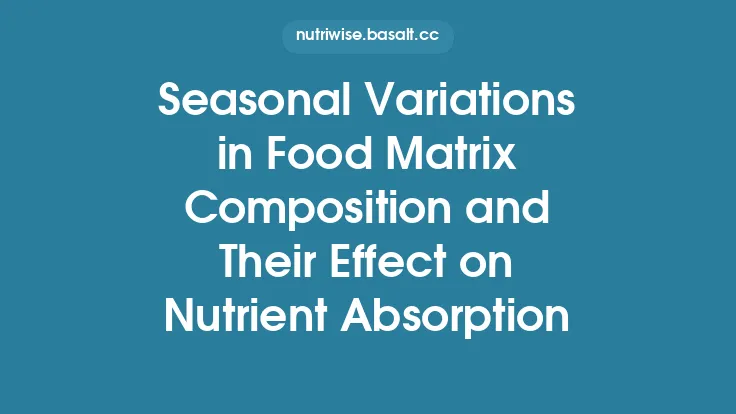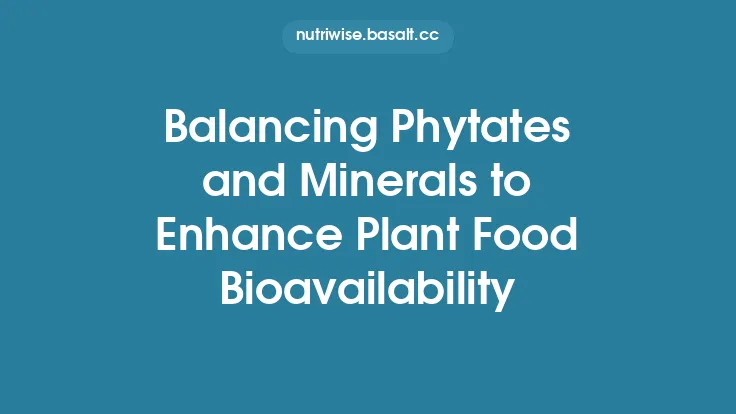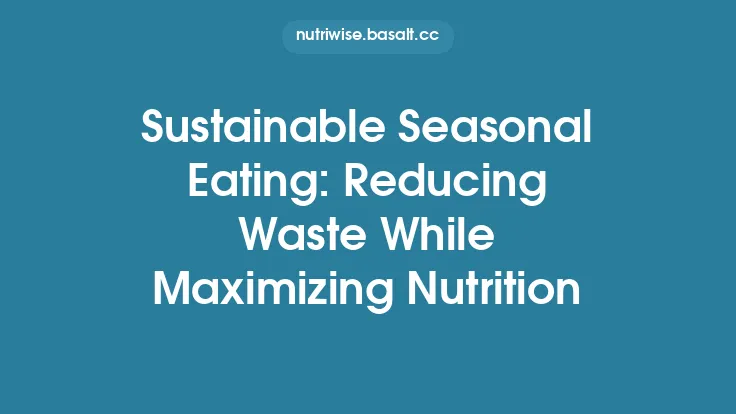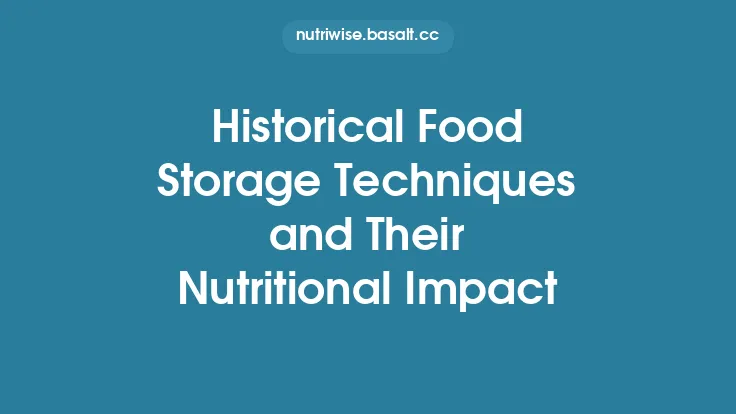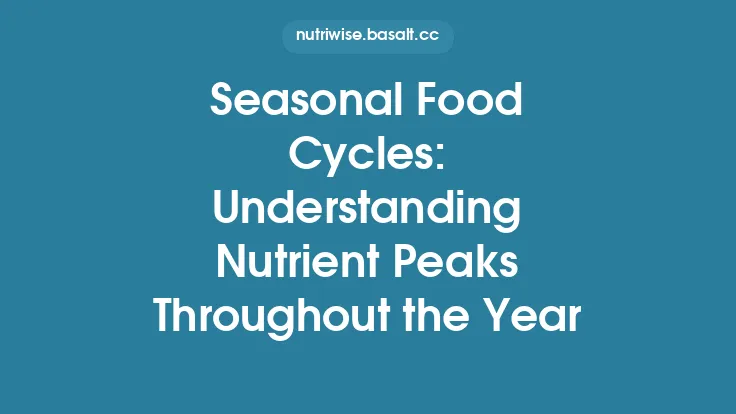Food waste is a pervasive problem that undermines both environmental sustainability and public health. When edible food is discarded, the nutrients it contains are lost, contributing to deficiencies in the population and increasing the demand for additional agricultural production. Effective policy frameworks can simultaneously curb waste and improve the availability of essential nutrients, creating a virtuous cycle that benefits the planet and its inhabitants.
The Scale and Consequences of Food Waste
Quantifying the Loss
- Global estimates: Approximately one‑third of all food produced for human consumption—about 1.3 billion tonnes annually—is wasted.
- Nutrient loss: This waste translates to the loss of roughly 25 % of the world’s protein, 30 % of its vitamin A, and 20 % of its iron supplies.
- Environmental impact: Food waste accounts for 8 % of global greenhouse‑gas emissions, largely due to methane released from decomposing organic matter in landfills.
Public‑Health Implications
- Micronutrient gaps: Discarded nutrient‑dense foods (e.g., fruits, vegetables, legumes) exacerbate micronutrient deficiencies, especially in low‑income populations.
- Food‑insecurity paradox: While many experience food scarcity, the simultaneous existence of massive waste highlights inefficiencies in distribution and access.
Policy Levers for Reducing Food Waste
1. Regulatory Measures
a. Mandatory Food Waste Audits
- Scope: Require large food‑handling entities (supermarkets, food‑service operators, manufacturers) to conduct annual waste audits.
- Implementation: Use standardized reporting templates aligned with the United Nations’ Food Waste Index.
- Outcome: Data‑driven identification of waste hotspots, enabling targeted interventions.
b. Extended Producer Responsibility (EPR)
- Concept: Hold producers accountable for the end‑of‑life management of their products, including unsold or returned items.
- Mechanisms: Impose fees based on the volume of waste generated, incentivizing redesign for longer shelf life and better portion control.
c. Date‑Labeling Standardization
- Problem: Confusion between “best‑by,” “use‑by,” and “sell‑by” dates leads to premature disposal.
- Policy: Adopt a unified, science‑based labeling system that clearly distinguishes safety‑related dates from quality‑related dates.
- Enforcement: Require compliance through periodic inspections and consumer education campaigns.
2. Economic Instruments
a. Food Waste Taxation
- Structure: Impose a modest tax on waste generated beyond a baseline threshold for commercial entities.
- Revenue Use: Direct proceeds to nutrition‑focused programs, such as community food banks or nutrient‑fortification initiatives.
b. Incentives for Food Recovery
- Grants & Subsidies: Offer financial support to businesses that donate surplus edible food to charitable organizations.
- Tax Deductions: Provide enhanced deductions for the fair market value of donated food, encouraging participation.
c. Pricing Signals for Perishables
- Dynamic Pricing: Allow retailers to reduce prices of near‑expiration items in real time, supported by regulatory frameworks that protect consumer safety.
- Digital Platforms: Promote apps that connect consumers with discounted, still‑safe food, reducing waste at the retail level.
3. Infrastructure Development
a. Food Recovery Networks
- Design: Establish regional hubs that aggregate surplus food from producers, processors, and retailers.
- Logistics: Invest in refrigerated transport and storage to preserve nutrient integrity during redistribution.
b. Composting and Anaerobic Digestion Facilities
- Goal: Divert inedible waste from landfills, converting it into valuable soil amendments or biogas.
- Policy: Mandate that municipalities achieve a minimum percentage of organic waste diversion, with penalties for non‑compliance.
c. Cold‑Chain Enhancements
- Technology: Deploy IoT‑enabled temperature monitoring to reduce spoilage during transport and storage.
- Regulation: Set minimum standards for cold‑chain integrity, especially for high‑nutrient foods such as leafy greens and dairy.
Enhancing Nutrient Availability Through Waste‑Reduction Policies
1. Nutrient‑Retention Standards
- Definition: Establish minimum nutrient retention thresholds for foods that are recovered and redistributed.
- Application: Require that recovered produce meet specific vitamin and mineral content levels before being deemed suitable for donation.
- Monitoring: Use rapid testing kits and data reporting to ensure compliance.
2. Fortification of Surplus Foods
- Opportunity: Surplus staple foods (e.g., grains, flours) can be fortified during processing before redistribution.
- Policy: Incentivize manufacturers to add micronutrients (iron, folic acid, vitamin D) to surplus batches, turning waste into a vehicle for nutrition improvement.
3. Integration with Nutrition Assistance Programs
- Linkage: Align food‑recovery initiatives with existing nutrition assistance frameworks (e.g., Supplemental Nutrition Assistance Program, school nutrition programs) without overlapping the scope of school‑meal policies.
- Benefit: Provides low‑income households with nutrient‑dense foods that would otherwise be discarded, improving dietary quality.
Cross‑Sector Collaboration and Governance
Multi‑Stakeholder Platforms
- Composition: Include representatives from government agencies, industry, academia, civil society, and consumer groups.
- Function: Facilitate data sharing, joint research, and coordinated action plans.
- Outcome: Harmonized policies that address waste at every stage of the food system—from farm to fork.
Evidence‑Based Policy Cycle
- Assessment: Conduct baseline measurements of waste volumes and nutrient losses.
- Policy Design: Draft interventions grounded in scientific literature and pilot results.
- Implementation: Roll out measures with clear timelines and responsibilities.
- Evaluation: Use key performance indicators (KPIs) such as waste reduction percentages, nutrient recovery rates, and cost‑effectiveness.
- Adjustment: Refine policies based on evaluation outcomes, ensuring continuous improvement.
Technological Innovations Supporting Policy Goals
Digital Traceability Systems
- Blockchain: Enables transparent tracking of food from production to consumption, identifying waste points and ensuring accountability.
- Analytics: Predictive models forecast surplus volumes, allowing pre‑emptive redistribution.
Smart Packaging
- Sensors: Indicate real‑time freshness, reducing unnecessary disposal due to perceived spoilage.
- Edible Coatings: Extend shelf life of perishable items, preserving nutrient content.
AI‑Driven Demand Forecasting
- Retail Application: Align inventory orders with actual consumer demand, minimizing overstock.
- Supply‑Chain Optimization: Adjust production schedules to match market needs, reducing post‑harvest losses.
International Benchmarks and Best Practices
- European Union: The “Food Waste Prevention and Management” directive sets binding targets for member states, emphasizing both waste reduction and nutrient recovery.
- Japan: The “Food Recycling Law” mandates the recycling of food waste into animal feed and fertilizers, coupled with strict reporting requirements.
- United States: The “Food Recovery Hierarchy” provides a framework prioritizing source reduction, followed by donation, and finally composting or energy recovery.
These models illustrate how legislative clarity, financial incentives, and robust monitoring can synergistically reduce waste while enhancing nutrient availability.
Challenges and Mitigation Strategies
Data Gaps
- Issue: Inconsistent reporting hampers accurate assessment of waste and nutrient loss.
- Solution: Standardize data collection protocols and invest in national food‑waste inventories.
Economic Barriers for Small Enterprises
- Issue: Compliance costs may be prohibitive for small retailers and producers.
- Solution: Offer tiered subsidies, technical assistance, and shared infrastructure (e.g., community cold‑storage facilities).
Consumer Perception
- Issue: Stigma associated with “surplus” or “recovered” foods can limit acceptance.
- Solution: Conduct public‑education campaigns highlighting safety, quality, and nutritional benefits.
Policy Recommendations for Sustainable Impact
- Adopt a Comprehensive Food‑Waste Legislation that integrates mandatory audits, EPR, and standardized date labeling.
- Create a Tiered Incentive Structure for food donation, fortification, and dynamic pricing to stimulate market‑driven waste reduction.
- Invest in Cold‑Chain and Recovery Infrastructure to preserve nutrient integrity during redistribution.
- Mandate Nutrient‑Retention Standards for all recovered foods entering the public supply.
- Establish a National Food‑Waste and Nutrient Database to inform policy adjustments and track progress.
- Foster Multi‑Sector Governance through permanent platforms that align objectives across health, agriculture, environment, and commerce ministries.
- Leverage Emerging Technologies—digital traceability, smart packaging, AI forecasting—to enhance efficiency and transparency.
By implementing these evidence‑based, evergreen strategies, policymakers can transform food waste from a persistent liability into a conduit for improving nutrient availability, thereby advancing public health, environmental stewardship, and economic resilience.
